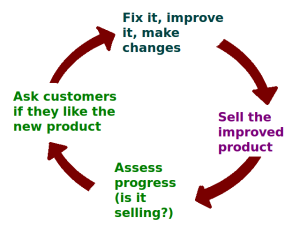
A joint venture (JV) is a business agreement in which parties agree to develop, for a finite time, a new entity and new assets by contributing equity.
By Alla Gul (MBA) – Our Contributor
A joint venture (JV) is a legal organization that takes the form of a partnership in which individuals, groups of individuals, companies, or corporations jointly undertake a transaction for mutual profit (“Joint Venture”, n.d.).
The parties agree to create a new entity by contributing equity.
Then they share in the revenues, expenses, and control of the enterprise. This paper discusses why joint ventures may be formed and what benefits may be expected when domestic and foreign companies form a venture. Then resent joint venture example is briefly illustrated.
The partnership can happen between big companies in an industry to differentiate, for example. The joint venture can occur between two small businesses that partner in order to successfully fight their bigger competitors. In addition, companies with identical products and services can also join forces “to penetrate markets they wouldn’t or couldn’t consider without investing tremendous resources” (“Joint Venturing”, n.d., p. 2). Next, a large company can decide to form a joint venture with a smaller business “in order to quickly acquire critical intellectual property, technology, or resources otherwise hard to obtain, even with plenty of cash at their disposal” (“Joint Venturing”, n.d., p. 2). To add, “There are good business and accounting reasons to create a joint venture with a company that has complementary capabilities and resources, such as distribution channels, technology, or finance” (“Joint Ventures (VS)”, n.d.). Below are some major reasons for forming a joint venture:
Internal reasons
1. Build on company’s strengths
2. Spreading costs and risks
3. Improving access to financial resources
4. Economies of scale and advantages of size
5. Access to new technologies and customers
6. Access to innovative managerial practices
Competitive goals
1. Influencing structural evolution of the industry
2. Pre-empting competition
3. Defensive response to blurring industry boundaries
4. Creation of stronger competitive units
5. Speed to market
6. Improved agility
Strategic goals
1. Synergies
2. Transfer of technology/skills
3. Diversification
(“Joint Venture”, n.d.).
Joint ventures between companies headquartered in different countries can be particularly beneficial. First, companies may use joint ventures to gain entrance into foreign markets. For example, foreign companies form joint ventures with domestic companies that already are present in markets the foreign companies would like to enter. Moreover, due to local regulations, some markets can only be accessed via joint venturing with a local business (“Joint Venturing”, 101, n.d., p.2). For example, China and to some extent India, require foreign companies to form joint ventures with domestic firms in order to enter a market (“Joint Venture”, n.d). Next, the foreign companies “generally bring new technologies and business practices into the joint venture, while the domestic companies already have the relationships and requisite governmental documents within the country along with being entrenched in the domestic industry”( “Joint venture”, n.d.). For example, joint ventures are common in the oil and gas industry, and are often formed between a local and foreign company. “A joint venture is often seen as a very viable business alternative in this sector, as the companies can complement their skill sets while it offers the foreign company a geographic presence” (“Joint Venture”, n.d.).
Recently the Hindustan Aeronautics Limited (HAL) and CAE, Canada signed an agreement to establish a joint venture company that will open a helicopter simulator training center in Bangalore, India.
The company, Helicopter Academy To Train By Simulation Of Flying (HATSOFF), will be owned equally by HAL and CAE. The training center is expected to begin operations in late 2008 by providing both civil and military helicopter pilot and maintenance training services. (“HAL”, 2007)
CAE is a world leader in providing simulation and modeling technologies and integrated training solutions for the civil aviation industry and defense forces around the globe (“About CAE”, n.d.). The Hindustan Aeronautics Limited (HAL) is in the list of top 100 defense companies in the world (“HAL 34th”, n.d.). Among its products are helicopters, aircrafts, advances communication and navigation equipment, and aerospace equipment (“Our Products”, n.d.). By forming the joint venture, the CAE is trying to extend its business-jet training network, to expend its distribution channels, to increase sales of its stimulators, and to capture and extend into India’s growing market (“Remarks for”, 2007, p.3). For the Indian partner, this joint venture provides the opportunity to differentiate, to acquire new skills and technology and to extend its marketing reach. Finally, both companies are expected to benefit from a development of a new market and from growth in revenues and profits.
To conclude, a joint venture is a strategic alliance where two or more parties form a partnership to share markets, intellectual property, assets, knowledge, and, profits. (“Joint Venturing”, n.d., p.1). The partnership may be formed between domestic companies or between domestic and foreign partners. When carefully planned and successfully implemented, joint ventures bring multiple benefits to parties involved
By Alla Gul (MBA) – Our Contributor
References
About CAE. CAE Inc. Retrieved September 26, 2007 from
http://www.cae.com/www2004/About_CAE/index.shtml
HAL, Canada’s CAE ink joint venture for helicopter simulator training center. (2007).
Yahoo Business News. Retrieved September 26, 2007 from http://in.news.yahoo.com/070926/139/6l8gn.html
HAL 34th among top 100 defense firms. Hindustan Aeronautic Limited. Retrieved
September 26, 2007 from http://www.hal-india.com/34th.asp
Joint ventures. Cornell University Law School. Retrieved September 26, 2007 from
http://www.law.cornell.edu/wex/index.php/Joint_venture
Joint venture. Wikipedia. Retrieved September 24, 2007 from
http://en.wikipedia.org/wiki/Joint_venture
Joint ventures (JVs). E-coach: Sharing Capital, Technology, Human Resources, Risks
and Rewards. Retrieved September 26, 2007 from
http://www.1000ventures.com/business_guide/jv_main.html
Our products. Hindustan Aeronautic Limited. Retrieved September 26, 2007 from
http://www.hal-india.com/products.asp
Remarks for first quarter fiscal year 2008 results. (2007). CAE. Retrieved September 26,
2007 from
http://www.cae.com/www2004/Investor_Relations/PDF/2008/CAE_FY08Q1_Remarks-en.pdf
Scott Allen. Joint venturing 101. About.com- Entrepreneurs. Retrieved September 26,
2007 from http://entrepreneurs.about.com/od/beyondstartup/a/jointventures.htm




